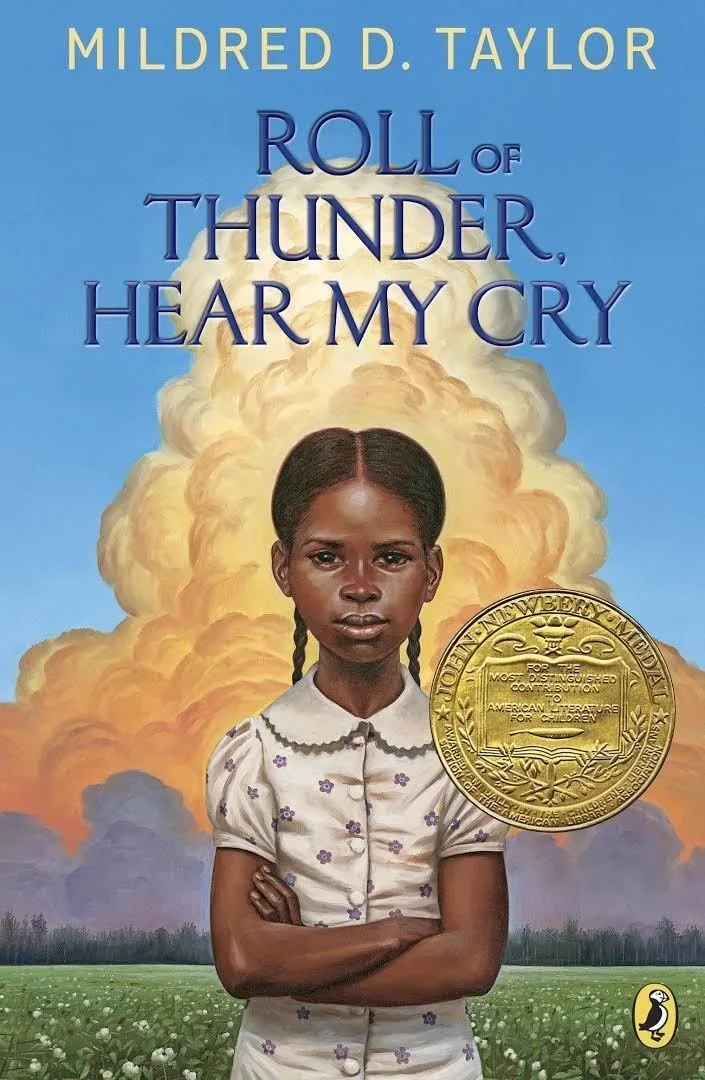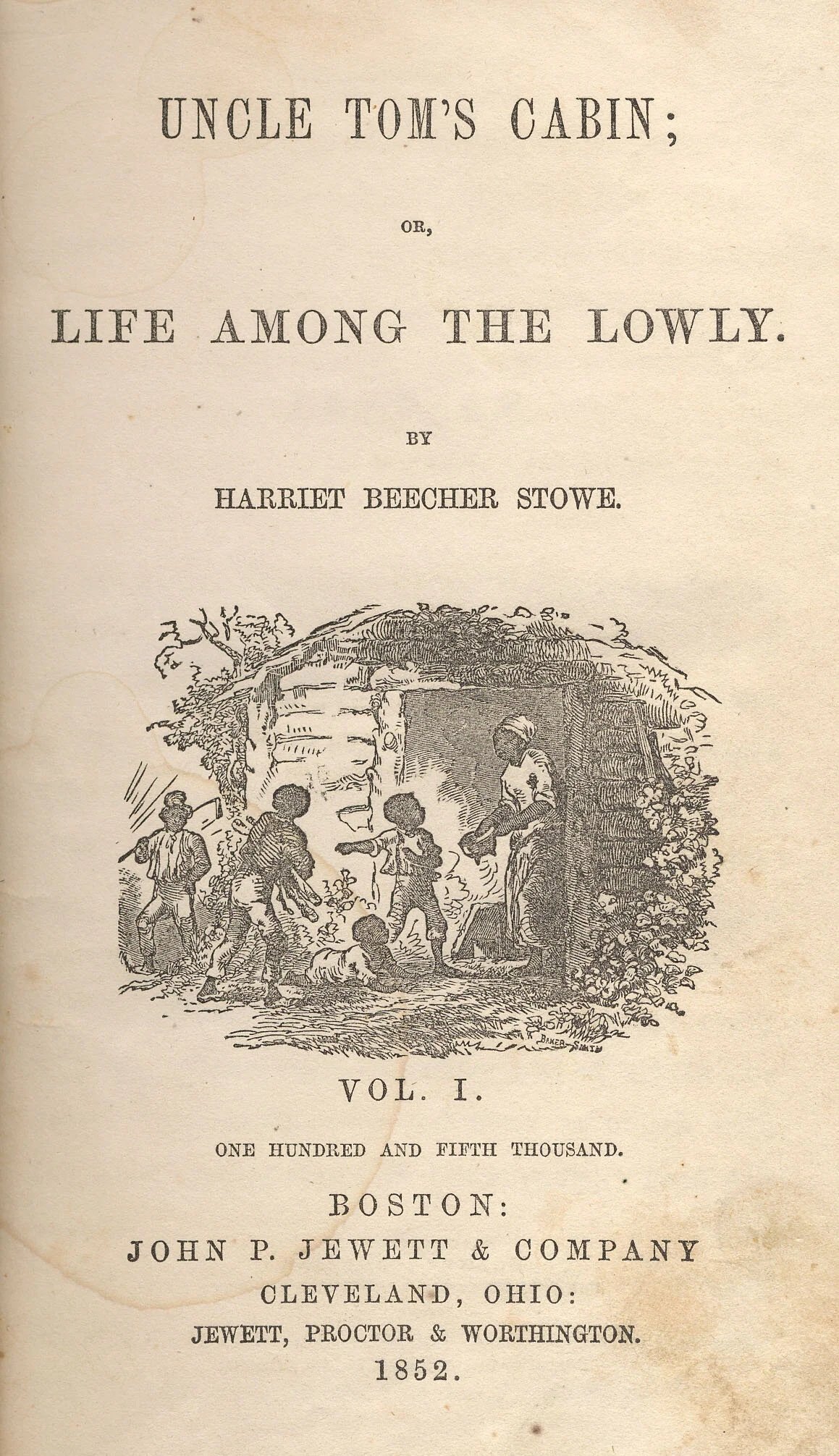
Roll of Thunder, Hear My Cry
Reading Schedule 2025
October 28: Chp 1-3 (pg 1 to 69)*
November 4: Chp 4- 6 (pg 70 to 139)
November 11 (make up day): Chp 7-9 (pg 140-217)
November 18: Chp 10 to end (pg 218-276)
* page numbers are from the 1997 edition

Weekly Assignments
October 28: Chp 1-3 (pg 1 to 69
1.As you read ANNOTATE. Decide on a shorthand notation for marking the following things
Character development - things that reveal what the characters are like
Imagery - sensory images that help you see, hear, taste, smell, feel
Important plot developments
Your questions and your reactions : funny? sad? outrage? shock? confusion?
November 4 - Chp 4 - 6 (pg 70 to 139)
Add to your character chart we drew in class
Build upon your historical knowledge by reading/watching one of the sources below or research a topic that this book touches on that you are curious about.
November 11 - Chp 7-9 (pg 140-217)
Answer discussion questions. Use your own words. Not AI’s.
November 18 Chp 10 to end (pg 218-276)
Answer discussion questions. Use your own words. Not AI’s.
Resources for understanding the novel’s historical context
Each time I teach this novel students have many questions both about the historical context and the legacy of white supremacy in the 1930’s that lingers today. These resources are answers to questions students frequently ask.
Sharecropping
1937, Alabama. Children in the tenant cabin they rent as sharecroppers
Sharecropping - what was it? Why was sharecropping a problem?
Learn about sharecropping in the South after the Civil War and how that limited the freedom of African-Americans. Watch this 2 minute video by NBC News Learn. If you want to earn tickets, you can take notes or draw an comic strip summarizing what you learn about sharecropping: https://www.youtube.com/watch?v=KkK08I1K3HY
Watch this gentleman describe his life as a child of sharecroppers in the South in the 1950s-1960s and imagine what you would have done or felt in his situation. https://www.youtube.com/watch?v=G0ErLkKJ3us
Enslavement started in the early days of the colonists coming to the Americas.
The American Civil War was fought over slavery.
What was the South fighting to preserve when they seceded from the Union?
White Supremacy & Slavery.
“As a people, we are fighting to maintain the heaven-ordained supremacy of the white man over the inferior or colored race.”
— The Charleston Mercury Newspaper, 1862
Sometimes Southerners used a euphemism of “States Rights” But what was the right states wanted? To keep owning slaves.
Watch this quick summary of slavery in the U.S. by Crash Course
31% of households in the South owned slaves. Yet even the majority of non-slave owning slavery owners also supported slavery.
First they argued it was a “necessary evil.” That slavery was inherently bad but needed.
Then in the early 1800’s enslavers changed their argument. They argued it was a “positive good” for the African-Americans that they enslaved. (That’s a quote from the Vice-President of the US, John C. Calhoun.) Slavery apologists claimed scripture justified slavery and that Whites were inherently superior to Blacks.
After losing the Civil War, Southerners proceeded to oppress newly freed Blacks with a campaign of terror and laws designed to keep African-Americans down. (Note, segregation and racism existed in the North too.)
Literary Allusion: What does the reference to Uncle Tom’s Cabin mean? What is Uncle Tomming?
Uncle Tom’s Cabin
A literary allusion is a reference to another book or poem within a piece of literature.
Learn about what “Uncle Tomming” is a reference to by reading this Encyclopedia Britannica article
Reconstruction: 1865–77
After the Civil War - slavery ended, and for a brief time, Blacks enjoyed many more rights.
Read about the period right after the Civil War, called Reconstruction. Excerpts from Britannica.com summarize this period below. Read more here: Encyclopedia Britannica
“Reconstruction, in U.S. history, the period (1865–77) that followed the American Civil War and during which attempts were made to redress the inequities of slavery and its political, social, and economic legacy and to solve the problems arising from the readmission to the Union of the 11 states that had seceded at or before the outbreak of war…. Encyclopedia Britannica
“Nonetheless, the political revolution of Reconstruction spawned increasingly violent opposition from white Southerners. White supremacist organizations that committed terrorist acts, such as the Ku Klux Klan, targeted local Republican leaders for beatings or assassination. African Americans who asserted their rights in dealings with white employers, teachers, ministers, and others seeking to assist the former slaves also became targets.
“The outcome of that year’s presidential contest between Republican Rutherford B. Hayes and Democrat Samuel J. Tilden hinged on disputed returns from these [Southern States]. Negotiations between Southern political leaders and representatives of Hayes produced a bargain: Hayes would recognize Democratic control of the remaining Southern states, and Democrats would not block the certification of his election by Congress (see United States presidential election of 1876). Hayes was inaugurated; federal troops returned to their barracks; and as an era when the federal government accepted the responsibility for protecting the rights of the former slaves, Reconstruction came to an end.”
“By the turn of the century, a new racial system had been put in place in the South, resting on the disenfranchisement of Black voters, a rigid system of racial segregation, the relegation of African Americans to low-wage agricultural and domestic employment, and legal and extralegal violence to punish those who challenged the new order. Nonetheless, while flagrantly violated, the Reconstruction amendments remained in the Constitution, sleeping giants, as Charles Sumner called them, to be awakened by subsequent generations who sought to redeem the promise of genuine freedom for the descendants of slavery. Not until the 1960s, in the civil rights movement, sometimes called the “second Reconstruction,” would the country again attempt to fulfill the political and social agenda of Reconstruction.
Read more here
POST-Reconstruction: the Jim Crow Era 1877 to 1965
The Old South rises again, with former enslavers taking control of government and instituting new new forms of oppression, including Jim Crow laws & violence
Segregation in the North and in the South.
Read this Time Magazine Article
Quick summary of how the years after Emancipation (after enslaved people were freed) were full of formal and informal attempts to keep Blacks from being treated as equals and to keep whites and Blacks separate, especially but not only in the South through the 1960s: https://eji.org/news/history-racial-injustice-sharecropping/
Plessy v. Ferguson- Supreme Court Case establishing the doctrine of “separate but equal.” Watch this brief video on History.com about this.
Ever Present Threat of Violence
Campaign of Terror: Lynching in America
What is lynching? Execution of a person by mob action without due process of law, especially hanging.
“After the Civil War, lynching became a domestic terrorist tactic that White people used to exert power over newly-freed Black men and women. Although many Americans think of it as a Southern phenomenon, lynchings took place in the North, too. Lynching was not legal — it was carried out by a mob rather than a formal judge and jury. However, because lynchings went unchallenged in courts, they became a de facto form of legalized mob violence,” (History.com)
In Roll of Thunder, the threat of lynching is present throughout the novel and is a key part of the climax in the last chapter.
Listen to one of these recordings of “Strange Fruit” while reading the lyrics.
Southern trees bear a strange fruit
Blood on the leaves and blood at the root
Black bodies swinging in the southern breeze
Strange fruit hanging from the poplar trees
Pastoral scene of the gallant south
The bulging eyes and the twisted mouth
Scent of magnolias, sweet and fresh
Then the sudden smell of burning flesh
Here is a fruit for the crows to pluck
For the rain to gather, for the wind to suck
For the sun to rot, for the trees to drop
Here is a strange and bitter cropThis first recording is by Billie Holiday from the 1930’s, (that’s exactly when Roll of Thunder takes place). This next is a live video of her singing is it from the 1950’s: “Strange Fruit” Last is f Nina Simone from the 1960s. Billie Holiday sang this song at most of her night club performances in the late 1930s -1950s. She was forbidden to sing it by the Federal Bureau of Narcotics commissioner Harry Anslinger but she kept singing it anyway. He eventual planned a drug sting knowing she was a drug user and had her arrested. Upon release from prison, she continued to sing it. Eventually, her heart, lung and liver problems drove her to seek medical help at a hospital. There at the hospital Anslinger had her chained to her hospital bed and by some accounts forbade the doctors from treating her. She died. Read a brief story of her death and how singing this song in defiance of the White authorities coupled with her drug and alcohol abuse, killed her, here.
The song is a a protest song written by Abel Meeropol, a communist Jewish teacher, about Black Americans begin hung (lynched).
Read this article about the opening of a new memorial to victims of lynching in America. https://www.nytimes.com/2018/04/25/us/lynching-memorial-alabama.html
A noose (rope tied in the special slip knot used to hang people) is used as a threat, as a form of intimidation still today. Here’s an article about incidents of nooses being secretly placed at national museums, schools, including at the Smithsonian recently. https://www.wbur.org/npr/531034568/noose-found-at-national-museum-of-african-american-history
Economic Context: The Great Depression 1930’s
What was the Great Depression?
The Great Depression - what was it? Here’s a quick video overview from Crash Course History
Legacy of Segregation and Racism lingering today
Roll of Thunder takes place in the 1930s which is 70 years after the end of the Civil War. Yet this book is all about residual segregation, white supremacy, and injustice in the South decades after the end of slavery.
Are there still effects today, 90 years after this book takes place? Here are a few that are easily quantifiable (that means measurable).
Housing Appraisals: Read this fascinating investigative journalism piece about current discrimination in housing appraisals from the New York Times.
Temperature: Another lasting effect of 1930s housing segregation (called redlining) shows up in the temperature of Black neighborhoods today. This article describes how racial segregation has led to predominantly Black neighborhoods to be hotter than white neighborhoods. https://www.nytimes.com/interactive/2020/08/24/climate/racism-redlining-cities-global-warming.html?searchResultPosition=1
Property Taxes: These studies document how one of the persistent effects of racial segregation from the 1930s onwards is that today home owners in predominantly black neighborhoods pay up to 13% more property tax relative to sales price of house than white owners
https://www.washingtonpost.com/business/2020/07/02/black-property-tax/
Jul 2, 2020 - State by state, neighborhood by neighborhood, black families pay 13 ... discriminatory property tax assessments...
Property Tax assessment as “legal” punishment for Black boycotts during Civil Rights era “In the summer of 1966, black residents of the town of Edwards, Mississippi, launched a boycott of local businesses in response to a series of discriminatory actions by town officials and local employers. The following year, Edwards’s board of supervisors retaliated by grossly inflating the assessed value on almost all black-owned homes in the town, an action that was ultimately upheld by the US Supreme Court in the Bland v. McHann (1972) decision,” (Abstract from Andrew W. Kahrl Assistant Professor of History Marquette University “The Power to Destroy: Discriminatory Property Assessments and the Struggle for Tax Justice”)




